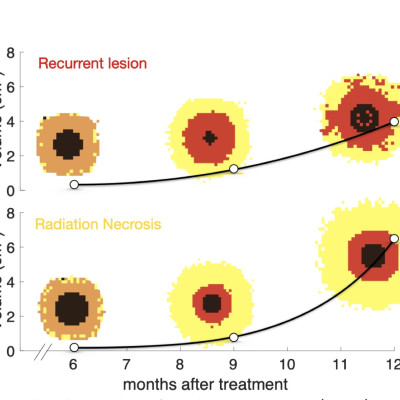Publication
Radiation necrosis after radiation therapy treatment of brain metastases: A computational approach
Beatriz Ocana-Tienda, Odelaisy Leon-Triana, Julian Perez-Beteta, Juan Jiménez-Sánchez, Victor M. Perez-Garcia
PLOS Computational Biology 20(1) e1011400 (2024)
MOLAB authors
Abstract
Metastasis is the process through which cancer cells break away from a primary tumor, travel through the blood or lymph system, and form new tumors in distant tissues. One of the preferred sites for metastatic dissemination is the brain, affecting more than 20% of all cancer patients. This figure is increasing steadily due to improvements in treatments of primary tumors. Stereotactic radiosurgery (SRS) is one of the main treatment options for patients with a small or moderate number of brain metastases (BMs). A frequent adverse event of SRS is radiation necrosis (RN), an inflammatory condition caused by late normal tissue cell death. A major diagnostic problem is that RNs are difficult to distinguish from BM recurrences, due to their similarities on standard magnetic resonance images (MRIs). However, this distinction is key to choosing the best therapeutic approach since RNs resolve often without further interventions, while relapsing BMs may require open brain surgery. Recent research has shown that RNs have a faster growth dynamics than recurrent BMs, providing a way to differentiate the two entities, but no mechanistic explanation has been provided for those observations. In this study, computational frameworks were developed based on mathematical models of increasing complexity, providing mechanistic explanations for the differential growth dynamics of BMs relapse versus RN events and explaining the observed clinical phenomenology. Simulated tumor relapses were found to have growth exponents substantially smaller than the group in which there was inflammation due to damage induced by SRS to normal brain tissue adjacent to the BMs, thus leading to RN. ROC curves with the synthetic data had an optimal threshold that maximized the sensitivity and specificity values for a growth exponent beta* = 1.05, very close to that observed in patient datasets.














